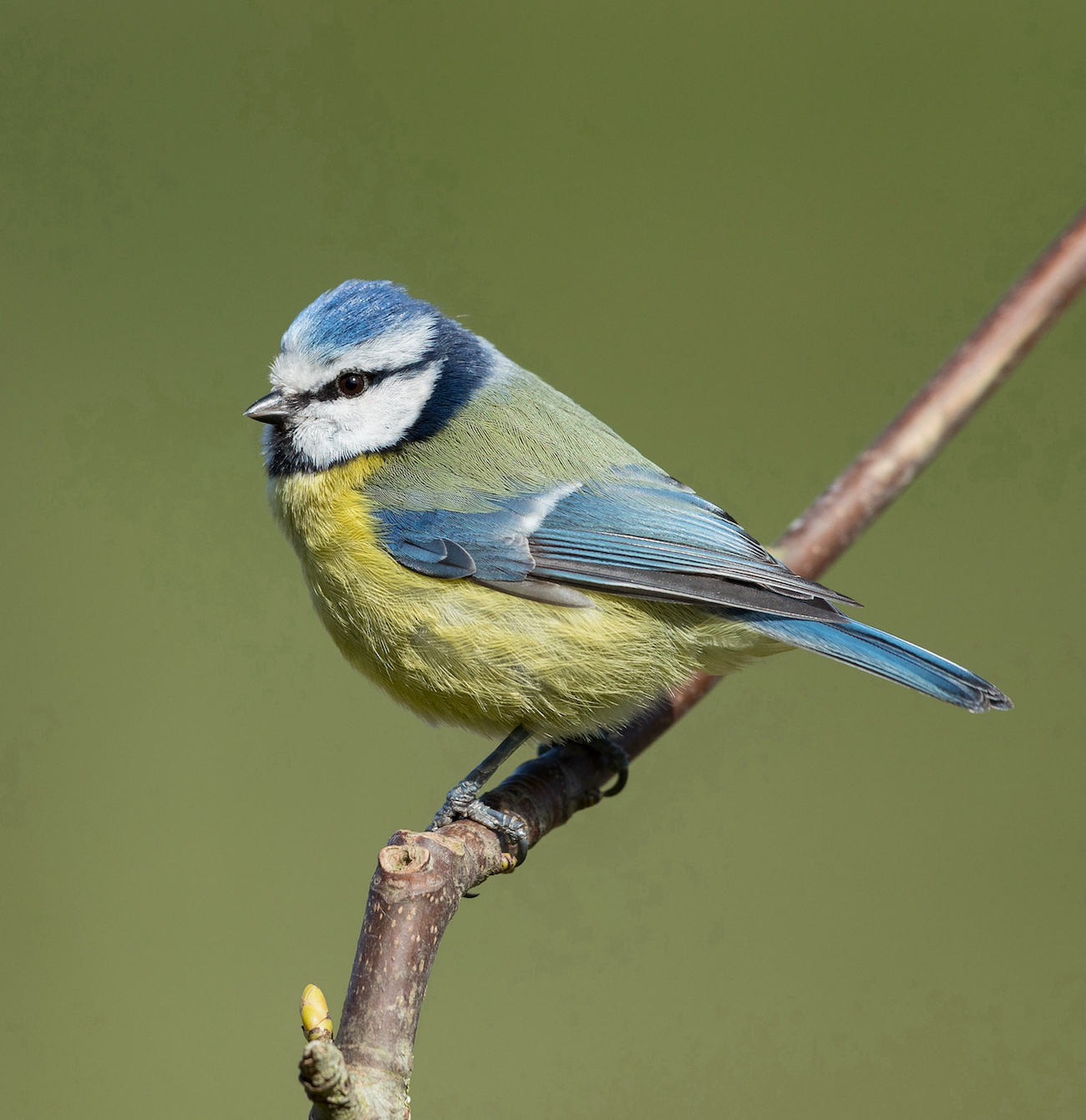Blue Tit Cyanistes caeruleus
British subspecies obscurus a very common resident.

The Atlas considered the population was around 100,000 pairs in the late 1980s and the indications are that the population has increased since then, particularly over the last 10 years. The BBS Index suggests a long-term trend increase over 1994-2019 of 21%, and the APEP4 adjusted population estimate in 2016 was 100,000 pairs. The resilience of the Blue Tit compared to some of our other small birds is probably down to its preference for feeding in gardens. The last report of the GBFS by Goodall (LBR 2011) showed it to be one of our most consistent year-round garden feeders. Broadleaf woodland remains its natural habitat.
Normally, the majority of Blue Tits do not move very far from their natal sites although a small number of ringing recoveries proving the exceptions show that some juveniles in autumn may travel several hundred kilometres. Occasionally though there have been irruptions of Blue Tits, mainly in historic times. Caton Haigh observed large movements of Blue Tits on the northeast Lincolnshire coast in October 1898, 1899, 1919 and 1923 (Smith and Cornwallis 1958). In 1957 the famous “Tit Irruption” was recorded across the east and south coast of England (Cramp et al, 1960) and on October 6th that year 200 were reported at Gibraltar Point. In that year, a Blue Tit ringed at Gibraltar Point in December 1957 was found dead in January 1959 at Wassigny in France, 436km to the southeast. There has been nothing similar since.
(Account as per new Birds of Lincolnshire (2021), included October 2022)
Reference
Cramp, S., Pettet, A., and J.T.R. Sharrock (1960). The irruption of tits in autumn 1957. British Birds 53: p49-77, p99-117, p176-192.
Smith, A. E., and Cornwallis, R. K. (1958): The Birds of Lincolnshire: Lincolnshire Natural History Brochure No. 2. Lincolnshire Naturalists Union, Lincoln.
